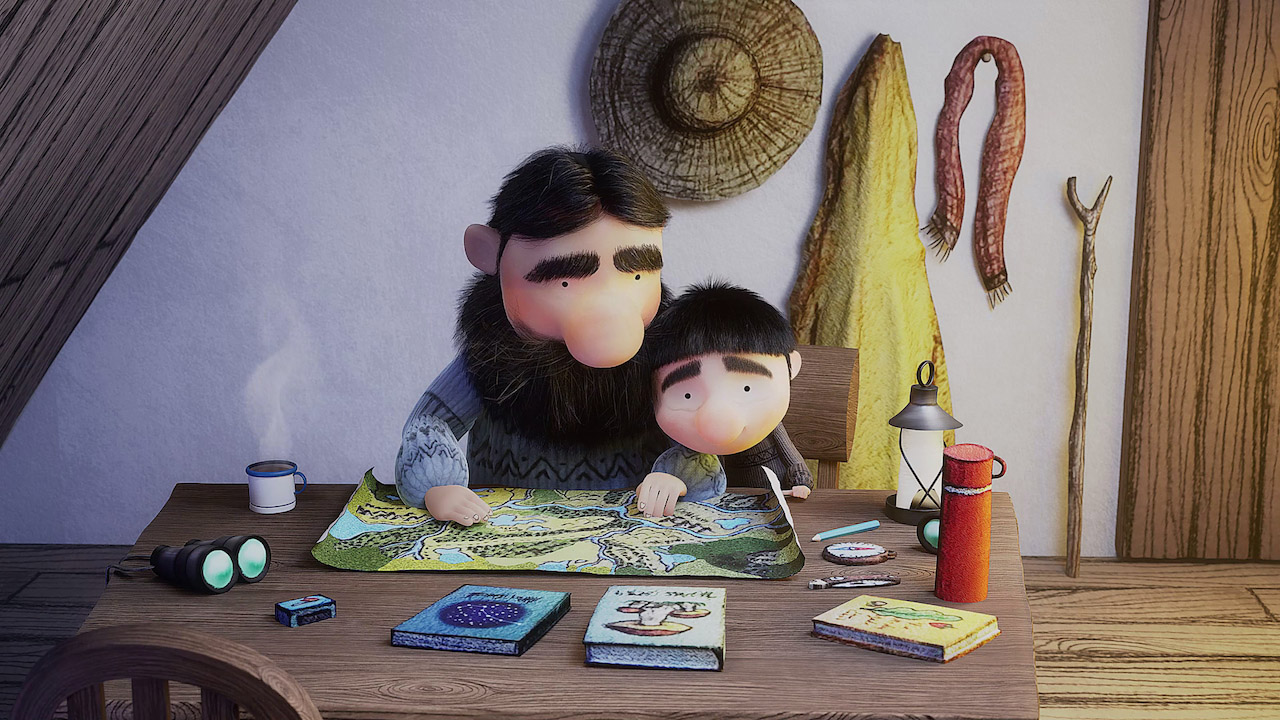

Real-Time Rendering For Animation: What’s The Catch?
What’s the big deal with real-time rendering? Sure, you can shorten production time by cutting out long waits for rendering, but there’s a whole lot more to it than that.
The caliber of rendering from game engines has evolved in recent years, their quality now rivaling standalone renderers. But more importantly, real-time technology can take the animation pipeline from linear to parallel. The entire team can review look development as each scene is developed, and iterate on lighting, camera angles, and post effects in real time. Team members can suggest different approaches — “Let’s try this!” — and the concept can come together in minutes rather than hours or days.
In short, teams can try different ways to tell the story and see what works best, all in real time. No more seeing the end result and wishing you could add or change a scene, only to realize there isn’t enough time to try it out.
A faster, more iterative pipeline also means that styles teams shied away from in the past might now be within reach. When you can so quickly try new styles for characters, environments, and lighting, the sky’s the limit. Another benefit of a real-time workflow is transmedia assets: print media, trailers, and social media, all using the same assets as the production itself.
In Epic Games’ latest episode of video series The Pulse, “Real-time Animation: Unlocking Story and Style,” which will be broadcast on September 29, real-time innovators in animation will join Dan Sarto of AWN to talk about this new paradigm for animation pipelines. Joining Dan are David Prescott, SVP of DNEG Animation; Jason Chen, EVP of BRON Digital; Kevin Dart, Founder and Creative Director of Chromosphere; and Karen Dufilho of Epic Games.

Game engines for animation
Real-time workflow for animation has its roots in game development. As real-time engines like Unreal Engine have evolved to produce visual quality worthy of final pixels, film and tv production teams are turning to real-time technology for look development, previs, virtual production, trailers, and postvis. Real-time rendering for animation is a natural extension of this use of the technology.
The quality of the real-time rendering in the animated short Rebirth is what inspired Engine House, a team-of-three animation studio in Cornwall, U.K., to start using Unreal Engine. The team recently completed their own animation project, Wylder, a short film based on the children’s book of the same name. The film is rendered entirely as final pixels in Unreal Engine.

Matching the distinct style of the printed book was of the utmost importance, and Engine House found that Unreal Engine provided an excellent platform for continued look development. Not only did a real-time workflow make the team more efficient, explains Natasha Price of Engine House, but they were able to engage in more hands-on creativity.
Story is king
No matter the pipeline, one fact remains the same: story is king. You can have a great environment and voice actors, but unless your audience engages with your characters and story, it’s all for naught.
One place where real-time pipelines really shine is in story development. While storyboards are still important, sometimes you can’t see the best way to tell a story until the shots are staged.
With a more traditional approach to animation production, each artist is siloed with his or her particular job. By the time a problem is noticed — the environment needs more rocks and trees, for example, or the post effects aren’t working with the rendered images — days or weeks may have passed, and a director may be faced with a hard decision about whether there’s time to send notes back to the artists.
With a real-time pipeline, there are no such compromises. Artists can review shots right along with the director and make any suggested changes while the meeting is still in session. The team can try different lighting placements, color schemes, and camera angles in real time. If more tweaks are needed, the director can say so right then and there. Special effects can be added immediately to see how they work with the scene. Changes that might have taken weeks with a traditional pipeline can take place in minutes or hours.
Story meetings can go from difficult decision-making ordeals to creative brainstorming sessions where ideas can be explored in real time. This is the advantage most often cited by producers and directors of animation: that a real-time pipeline leaves more time for the creativity of storytelling.
To learn more about how a real-time workflow has helped producers tell better stories, tune into The Pulse on September 29. Be sure to register so you can participate in the live Q&A afterward. You can also keep up to date on the latest developments in real-time animation via Epic Games’ animation hub.

